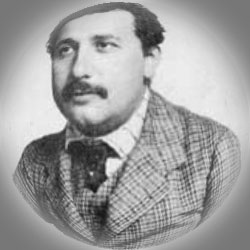

INDEX- CV- PUBLS.- PICT.ESSAYS- ABSTRACTS- INDEX・LAPLACE- OL.ESSAYS-CRS.MATERIALS-ASSORT.INDEX
Seminar on Enstein's Relativity Theories, 2002 Spring Term

Why does this same person (young Einstein) look different? Each has a different curvature! And in order to understand this, you've got to know General Relativity.
Albert Einstein, Relativity: the Special and the General Theory, Three Rivers Press, 1961.
This is the authorized English translation of: Ueber die spezielle und allgemeine Relativitaetstheorie, gemeinverstaendlich, 1917.
空間と時間の問題は、哲学の歴史の中でも重要な地位を占めるし、現在でも科学(物理学)と哲学とが絡み合う分野の一つである。この問題をきちんと論じるためには、相対性理論、とくに一般相対性理論の知識が不可欠である。アインシュタインみずからの手になるこの本は、初心者に対する手引きとして未だその値打ちを保っている。 ただし、もっと踏み込んだ知識を身につけていかなければ現代の議論についていくことはできないので、この本を読むのと平行して、自分で相対論のもう少し数学的な取り扱いにもなれていかなければならない。そのためには、次の二つの本がお薦めである。なぜ英語の本か?それは、日本人の手になる本で、これほど親切で読みやすく、かつ厳密さを保った本が見あたらないからである。
Edwin F. Taylor and John Archibald Wheeler, Spacetime Physics: Introduction to Special Relativity, 2nd Edition, Freeman, 1992.
Edwin F. Taylor and John Archibald Wheeler, Exploring Black Holes: Introduction to General Relativity, Addison Wesley Longman, 2000.
ニューズレター45号でも示唆したように、空間時間の問題を五十年以上もほったらかしで「日本でも科学哲学は根付いている」などと大口はたたけない。セミナーでこういう本を読むついでに、ぜひ相対論を掘り下げてみよう。こういう好機を逃すと、キミたち、死ぬまで相対論とは無縁となるぜ!それは、シェークスピアやバッハ、モーツァルトを知らずに死ぬのと同じくらい大きな損なのじゃ。
相対性理論には二つあって、「特殊相対性理論」と「一般相対性理論」とが区別される。後者が格段に難しい。特殊相対性理論は1905年、若きアインシュタインの、いわば「天才の一筆」で生まれた。これは、当時問題だった力学と電磁気論の間の不調和を解決する理論として提唱されたもの。「相対性原理」と「光速度一定の原理」の二つを軸とし、「同時性」の概念の書き換え、時空の相対性(時間や距離は、運動状態に依存して変わる)など、哲学に絡む問題にも決定的な新機軸を打ち出した。しかし、力学の重要問題の一つ、重力については何も述べていない。
アインシュタインは、1907年に新たな着想を得て(「わが生涯の最もすばらしい考え」、重力場と加速度系の等価性)、相対性理論を重力も扱える形に展開する試みを始める。これを完成させたのが1915年の一般相対性理論である。アインシュタインが強調する「一般相対性原理」にはいくつか混乱が含まれているので注意が必要。重力は、対象が何であれ同じように働くという顕著な特殊性がある。これを扱うためには、従来物理学で前提されてきたユークリッド幾何学の枠を捨てて、新しい幾何学に移る必要がある、ということにアインシュタインは気づいた(1912年)。回転運動系の考察がその突破口となったと考えられており、これはテキストでも触れられている。かくして、一般には非ユークリッド幾何学の枠の中で重力が扱われることとなり、テキストでのアインシュタインの叙述も、これをにらんだ上で始められているのである。簡単に言えば、重力のない世界は「平ら、あるいはまっすぐな」幾何学で記述でき、これがユークリッド幾何学(あるいは、時間が入ればローレンツ幾何学)の世界である。これに対し、重力は「曲った」幾何学で記述できる。重力が強ければ強いほど、曲がり具合も強くなる。「曲がる」のは、空間だけではなく時間もである。そこで、一般相対性理論では、現在が過去に入り込んだり、二つの時空の場所が複数の経路でつながったり、という奇妙な時空構造も可能になる。こういった構造を扱う幾何学は、ガウスの曲面論に始まり、リーマンが発展させた「微分幾何学」である。この数学は難しいが、ある程度スキップしても、一般相対性理論の物理的な部分は理解できる。ブラックホールを扱えるシュヴァルツシルト幾何学は、このような曲った幾何学のもっともシンプルな一例である。このシュヴァルツシルト幾何学程度なら、文科系の学生でも(しかるべき努力をすれば)十分に理解できる。そして、これが理解できれば「回転するブラックホール」にも手が届く。こういった理解なくして、「物理学と関わりのある時空の哲学」はできない。主観的な意識の枠内での時空論や「現象学的」な時空論(これらは哲学というよりは文学の一部)は、それしかできない人々のために残しておけばよい。
Section One: Physical Geometry
Section Two: Coordinates
Section Three: Space and Time in Classical Mechanics
Section Four: Galileian System
Section Five: The Principle of Relativity
Section Six: Addition of Velocities
Section Seven: Light and Relativity
Section Eight: Physical Time Defined
Section Nine: Relativity of Simultaneity
Section Ten: Relativity of Distance
Section Eleven: The Lorentz Transformation; Appendix One: Derivation
First Assignment, due May 7 (Tue)
Section Twelve: Rods and Clocks in Motion
Section Thirteen: Relativistic Addition of Velocities → see Einstein on Fizeau's Experiment
Section Fourteen: Heuristic Value?
Section Fifteen: General Results → see Energy and Mass
Section Sixteen: Experience and Special Relativity
Section Seventeen: Minkowski Space
Section Eighteen: General Principle of Relativity
Section Nineteen-Twenty: Gravity, Acceleration, and Relativity
Section Twenty-One: What's Wrong with Classical Mechanics and Special Relativity?
Section Twenty-Two: Light in a Gravitational Field
Section Twenty-Three: Clocks and Rods on a Rotating Disc
Section Twenty-Four: Euclidean and Non-Euclidean Continuum
Section Twenty-Five: Gaussian Coordinates → See Gauss' Theory of Curved Surface
Section Twenty-Six and Twenty-Seven: Space-Time Continuum in Special and General Relativity
Section Twenty-Eight: Exact Formulation of the General Principle of Relativity?
Section Twenty-Nine: How to Arrive at Einstein's Field Equation
Second Assignment, due June 4 (Tue)
Section Thirty - Thirty-Two: Cosmological Considerations
Appendix Five: Brief History of Space
Third Assignment, due July 2 (Tue)
Additional Materials
Electromagnetism and Relativity
The Genesis of General Relativity
Eddington and Taylor & Wheeler on Jules Verne
Eddington on Kinds of Space and Field Equations
Uniformly Accelerated System New
アインシュタインの思考をたどる、レジメ [The steps to the general relativity] New
Last modified, April 15, 2006. (c) Soshichi Uchii
webmaster